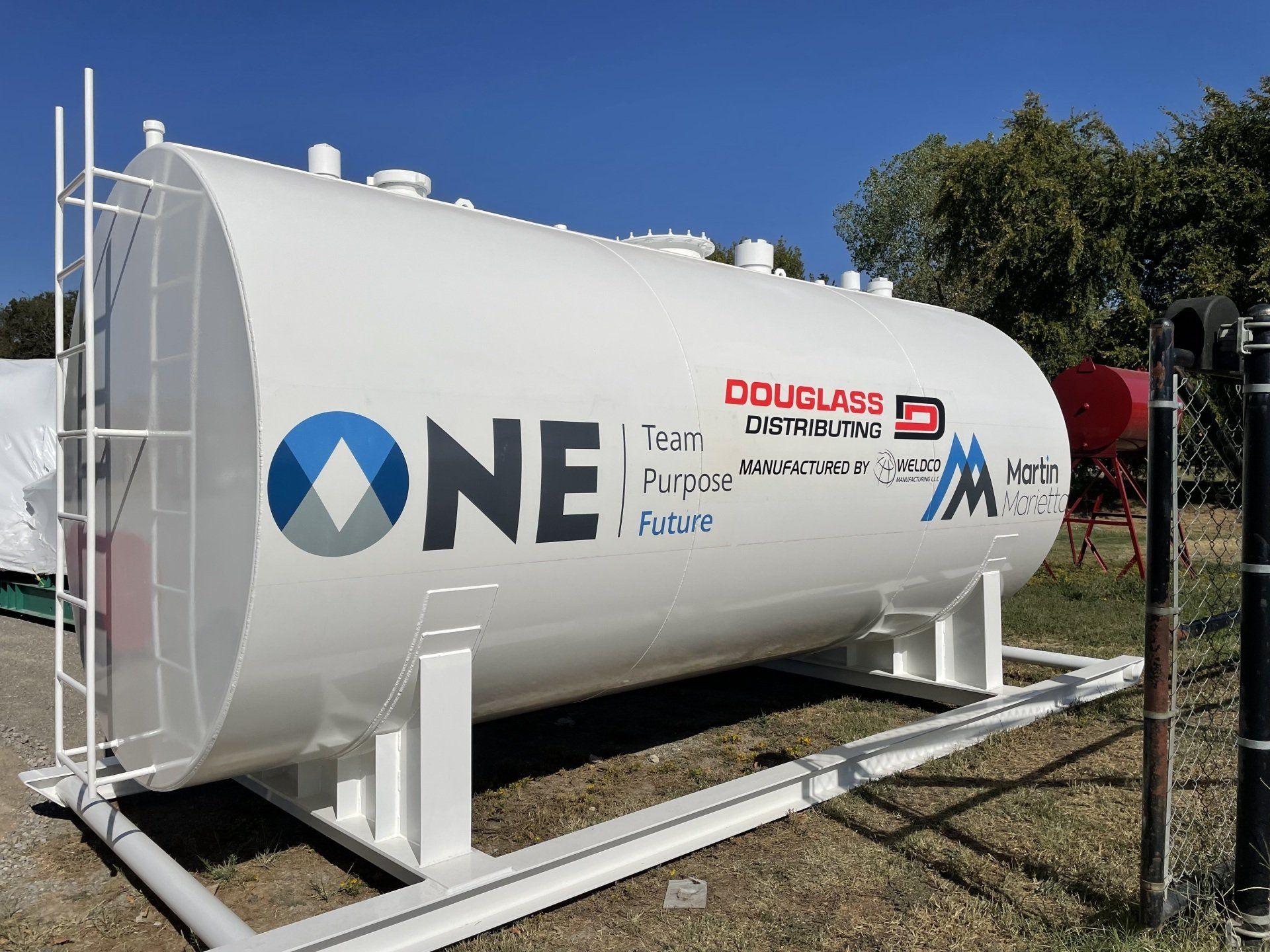resources and articles
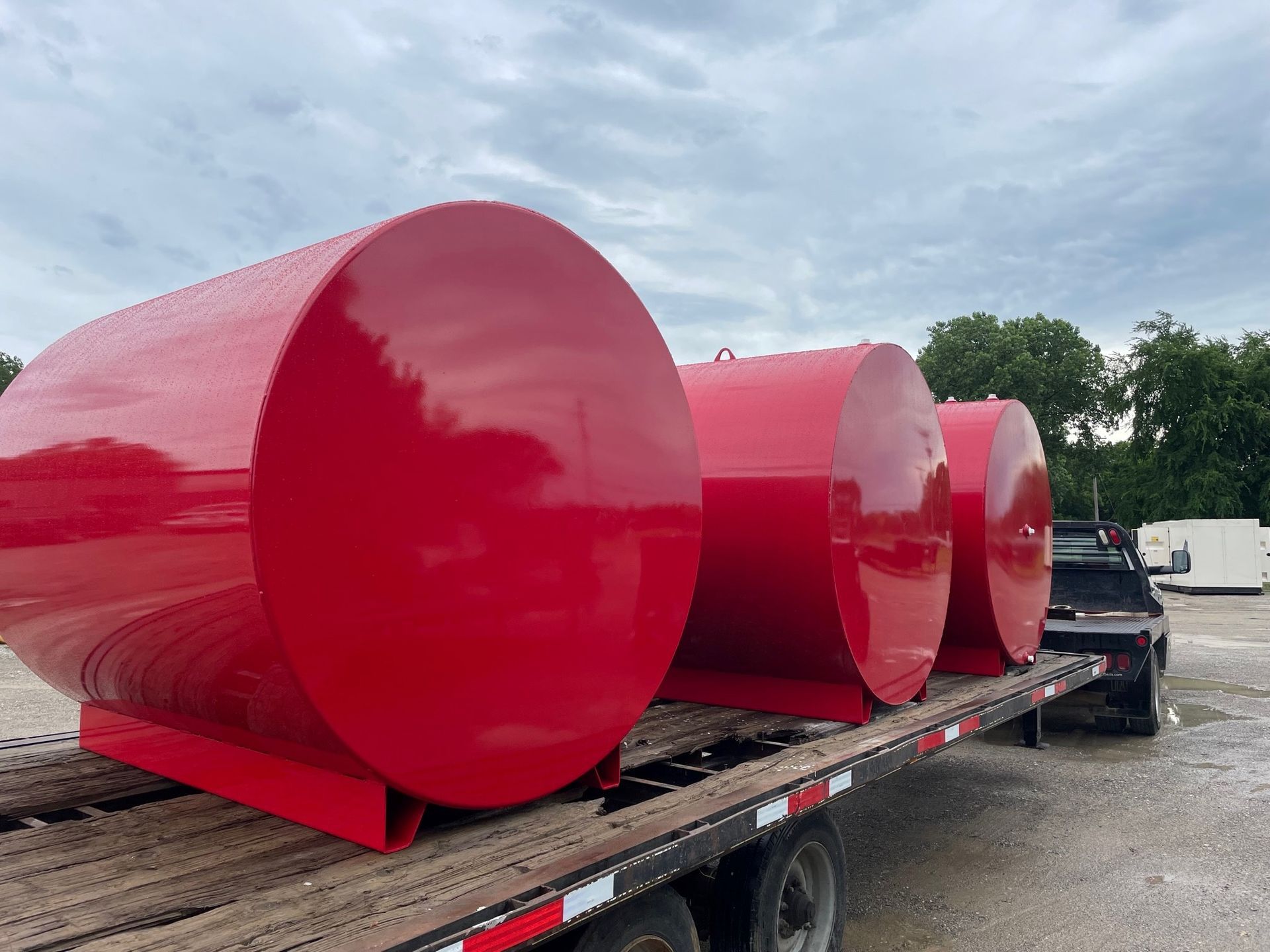
By Jacob Pearson
•
01 Dec, 2023
Above ground storage tanks (ASTs) are containers used to store various substances, such as fuel, chemicals, and water, above the ground surface. They are often found in industries such as oil and gas, chemical manufacturing, agriculture, and transportation, providing a cost-effective and convenient solution for storing large volumes of these substances.The importance of these tanks in these industries cannot be overstated as they play a vital role in the operations of such sectors. The article discusses a 290 gallon steel AST used for storing and dispensing gasoline. The integrity and design of these tanks are critical as they hold substances that could pose a risk if not stored correctly. Therefore, selecting the right type of tank is paramount to ensure compliance with regulations and meet specific operational needs. There are several types of ASTs, but in this article, we will zero in on two main types: single wall and double wall tanks . We will explore the differences between these two, their advantages, safety considerations, and how they comply with regulations. Additionally, it is important to note that ASTs are subject to stringent regulations and guidelines to ensure the safe storage and handling of hazardous materials. These regulations are put in place by environmental and safety bodies to protect the environment and the people working around these tanks. Compliance with these regulations is not just a legal requirement, but it's also an ethical obligation to safeguard our environment. Single Wall Tanks: An Overview Single wall tanks, as the name suggests, consist of a single layer of metal that directly holds the stored substance.This design is straightforward and effective, fulfilling the basic requirement of a storage tank , which is to safely contain substances.Single wall tanks are commonly used in situations where [secondary containment](http://www.epacinc.com/single-wall-vs-double-wall-fuel-tanks-need) , such as a concrete structure coated with epoxy, is already in place to prevent leaks. Single wall tanks offer several benefits, including affordability and flexibility in placement. One specific type of single wall tank worth mentioning is the diked tank. Diked tanks are a subtype of single wall tanks that come with an integral steel containment structure in the form of an open-top dike. This design provides secondary containment in the event of a leak, thereby minimizing the risk of environmental contamination. This is an excellent example of how the single wall tank design can be augmented to increase safety. While single wall tanks are often used when there is an existing concrete structure available for containment, it should be noted that this structure must meet specific requirements to be considered effective. This concrete structure needs to be coated with a substance such as epoxy to prevent the corrosive action of the stored substances. Besides, it should be inspected regularly for any signs of wear or damage that could compromise its effectiveness. This underscores the need for additional safety measures when dealing with single wall tanks. Double Wall Tanks: An Overview Double wall tanks take safety and environmental protection a notch higher with their innovative design. Unlike their single-wall counterparts, double wall tanks are designed with two layers of metal, with the primary tank surrounded by a secondary containment layer. This design essentially provides a tank within a tank, significantly increasing the level of safety and protection against leaks. The secondary containment layer in double wall tanks offers an extra level of protection. Should there be a leak in the primary tank, the secondary containment layer is ready to catch the leaked substance before it can enter the environment, offering a fail-safe mechanism. This is especially crucial when storing substances that are potentially harmful to the environment or pose a fire risk. An important feature of double wall tanks is their monitoring systems. These systems are designed to detect leaks and prevent rainwater from entering the tank, further enhancing the safety and efficiency of these tanks. For instance, a vacuum gauge is often installed between the two walls to monitor the space. Any change in the vacuum level could indicate a leak, prompting immediate action. Double wall tanks also offer resistance to inclement weather conditions. Their robust construction can withstand high winds and heavy rainfall, ensuring that the stored substance remains safe even in harsh weather conditions. This is a critical feature as exposure to adverse weather conditions could cause damage to the tank and potentially lead to leaks. Comparison: Single Wall vs Double Wall Tanks When comparing single wall and double wall tanks, several factors should be taken into account. These factors include cost, space and existing structures, compliance with regulations, placement and flexibility, leak monitoring systems, and resistance to weather conditions. When it comes to cost, single wall tanks generally have a lower initial cost than double wall tanks. This can make them an attractive option for businesses operating on a tight budget. However, it's important to note that while single wall tanks may have a lower upfront cost, additional expenses may be incurred for secondary containment systems, such as concrete structures or other approved methods [3, 4]. Space and existing structures also play a key role in the decision-making process. While single wall tanks require additional concrete structures for containment, double wall tanks do not. This can make double wall tanks a more convenient option in situations where space is limited or there is no existing containment structure [3, 4]. Compliance with Environmental Protection Agency (EPA) regulations is a crucial consideration in the choice between single wall and double wall tanks. Double wall tanks automatically comply with EPA regulations due to their built-in secondary containment . In contrast, single wall tanks may require additional measures, such as secondary containment systems, to achieve compliance [3, 4]. When it comes to placement and flexibility, single wall tanks offer more flexibility, especially if there is an existing concrete structure available. However, double wall tanks, with their built-in secondary containment, may not require specific placement to ensure containment. Leak monitoring is another important factor in the comparison. Double wall tanks have built-in leak monitoring systems, providing an added layer of protection and peace of mind. Single wall tanks, on the other hand, may require additional leak detection systems to ensure safety. Finally, weather resistance can be a key factor, especially in areas prone to severe weather conditions. Double wall tanks offer resistance to inclement weather conditions, ensuring the stored substance remains safe. In summary, when choosing between single wall and double wall tanks, it's crucial to consider all these factors. The decision should be based on a thorough assessment of the specific needs, budget, and regulatory requirements of the operation. Safety Considerations for Above Ground Storage Tanks When it comes to above ground storage tanks , safety is paramount. For single wall tanks, the absence of a built-in secondary containment means it is critical to have an effective secondary containment measure in place, such as a concrete structure coated with epoxy. This is to ensure that in the event of a leak, the leaked substance is contained and does not seep into the environment. Additionally, regular inspections of the tank and the secondary containment structure are crucial to ensure their integrity. This is particularly important for single wall tanks where the risk of leaked substances reaching the environment is higher due to the absence of a built-in secondary containment. Regular inspections can help detect any signs of wear or damage early, allowing for timely repairs and prevention of potential leaks. Double wall tanks, on the other hand, have an inherent secondary containment system. This design is a significant safety feature as it provides a built-in safeguard against leaks. However, this does not eliminate the need for regular inspections and maintenance. The secondary containment layer should be routinely inspected to ensure its integrity and functionality. Furthermore, double wall tanks often come equipped with leak monitoring systems. These systems provide an added layer of safety by detecting leaks early, allowing for prompt action to prevent environmental damage. Regular testing and calibration of these systems are necessary to ensure they remain effective in detecting leaks. In summary, regardless of the type of tank, adherence to safety guidelines and regulations is crucial in ensuring the safe storage and handling of substances. Regular inspections, routine maintenance, and effective leak detection and containment measures are key in ensuring the safety of above ground storage tanks. Importance of EPA Compliance and Regulations Compliance with Environmental Protection Agency (EPA) regulations is a critical aspect of operating above ground storage tanks. The EPA has specific guidelines and requirements in place to ensure the safe storage and handling of hazardous substances.These regulations are designed to protect the environment from potential contamination that can result from leaks or spills. Double wall tanks are designed to automatically meet these EPA regulations. Their built-in secondary containment provides an added layer of protection, minimizing the risk of leaks and environmental contamination. This makes double wall tanks an attractive option for businesses looking to ensure regulatory compliance with minimal additional measures [3, 4, 5]. Single wall tanks, on the other hand, may require additional measures to achieve compliance with EPA regulations. This could include the installation of secondary containment systems or other approved methods to prevent leaks [3, 4]. It is essential to understand these requirements and ensure that they are met when choosing and operating single wall tanks. In addition to federal regulations, state and local regulations may also apply to above ground storage tanks. These can vary from one location to another and may have specific requirements regarding tank design, installation, operation, and maintenance. It is essential to understand these regulations and ensure compliance to avoid penalties and ensure environmental protection. Cost Analysis and Budget Considerations The financial aspect of installing and maintaining above ground storage tanks is a significant consideration. When it comes to upfront costs, single wall tanks generally have a lower initial cost compared to double wall tanks. This can make them an attractive option for businesses operating on a tight budget. However, it is crucial to also consider the long-term costs associated with each type of tank. For single wall tanks, additional expenses may be incurred for secondary containment systems, such as concrete structures or other approved methods. These costs can add up over time, potentially offsetting the initial cost savings [3, 4]. Furthermore, if a leak occurs and the secondary containment fails, the cost of clean-up and potential fines for environmental damage can be substantial. Double wall tanks, on the other hand, come with a higher initial cost. However, their built-in secondary containment eliminates the need for additional containment measures, potentially saving costs in the long run [3, 4]. Furthermore, in the event of a leak, the secondary containment can prevent the leaked substance from entering the environment, potentially saving on clean-up costs and avoiding fines. Therefore, when considering the cost of single wall vs. double wall tanks, it's important to look beyond the initial investment. A comprehensive cost analysis should include both upfront and long-term costs, including potential clean-up costs and fines in case of leaks. This will provide a more accurate picture of the total cost of ownership, enabling an informed decision to be made. Environmental Impact and Sustainability The decision between single wall and double wall tanks can have significant implications for the environment. Single wall tanks, if not equipped with effective secondary containment, carry a higher risk of environmental damage in the event of a leak. This can lead to soil and water contamination, which can have serious consequences for local ecosystems and public health. On the other hand, double wall tanks, with their built-in secondary containment, provide an added layer of protection, minimizing the potential for environmental contamination. In the event of a leak, the secondary containment layer acts as a barrier, preventing the leaked substance from escaping into the environment. By choosing double wall tanks, businesses can demonstrate their commitment to environmental stewardship. These tanks offer a higher level of safety and reduce the risk of environmental damage, contributing to the long-term sustainability of operations. This can enhance a business's reputation as an environmentally responsible entity and can potentially contribute to customer trust and loyalty. Moreover, as environmental regulations become more stringent and public awareness of environmental issues increases, the use of double wall tanks can help businesses stay ahead of the curve. By investing in double wall tanks, businesses can not only meet current regulations but also be prepared for potential future regulatory changes aimed at further protecting the environment. Real-World Examples and Recommendations In a real-world example discussed on the AST Forum, a 290-gallon steel AST used for storing and dispensing gasoline raises questions about determining if the tank is single wall or double wall just by observing the vents. In this case, without visible markings or labels to provide information about the tank's construction, it can be challenging to determine if the tank is single or double-walled. One recommendation in such situations is to consult the manufacturer's specifications or seek professional advice. Visual indicators, such as a slightly larger size, a vacuum gauge to monitor the vacuum between the layers, and the absence of a separate epoxy-coated concrete structure, may suggest a double wall tank. However, these indicators are not foolproof, and it is always best to seek professional advice or consult the manufacturer's specifications to confirm the type of tank. In addition to observing the physical characteristics of the tank, regular inspections and maintenance can also provide insights into the tank's construction. For instance, during maintenance, the presence of a secondary containment layer or a leak detection system may indicate a double wall tank. Therefore, regular inspections and maintenance are not only important for ensuring the safe operation of the tank but can also provide valuable insights into its construction. Maintenance and Longevity of Tanks The maintenance of above ground storage tanks is crucial for ensuring their longevity and safe operation. Regular inspections, leak monitoring, and adherence to maintenance guidelines provided by the manufacturer are key aspects of tank maintenance, regardless of whether they are single wall or double wall tanks. For single wall tanks, regular inspections of the tank and the secondary containment structure are essential. Any signs of wear or damage should be promptly addressed to prevent leaks and environmental contamination. Regular maintenance also includes checking for signs of corrosion, which can compromise the integrity of the tank and lead to leaks. For double wall tanks, both the primary and secondary containment layers should be regularly inspected for signs of corrosion or leaks. The monitoring systems, if present, should be tested and calibrated to ensure accurate detection of any leaks. While the built-in secondary containment of double wall tanks provides an added layer of protection, it does not eliminate the need for regular inspections and maintenance. With proper maintenance, both single and double wall tanks can provide long-term reliability and cost-effectiveness. In fact, with proper maintenance, double-wall oil tanks can last up to 50 years. This underlines the importance of regular inspections and maintenance in ensuring the longevity of above ground storage tanks. Future Trends and Innovations in Tank Design The field of above ground storage tanks is continually evolving, with ongoing advancements in materials, design, and technology. Future trends and innovations may include improved corrosion-resistant materials, enhanced leak detection systems, and more sustainable and environmentally-friendly designs. For example, advancements in material technology can lead to the development of more corrosion-resistant materials, enhancing the longevity and durability of above ground storage tanks. Improved leak detection systems, capable of detecting even the smallest leaks in real-time, can provide early warning of potential issues, allowing for prompt action to prevent environmental damage. Sustainable and environmentally-friendly designs are another potential area of innovation. As environmental regulations become more stringent and public awareness of environmental issues increases, the demand for sustainable and environmentally-friendly storage solutions is likely to grow. This could lead to the development of tanks made from recycled or eco-friendly materials, or designs that minimize the risk of leaks and environmental contamination. As technology continues to evolve, it is essential to stay updated on the latest innovations and trends in tank design and technology. By embracing new technologies and sustainable practices, businesses can ensure the safe and efficient storage of substances while minimizing their environmental footprint and meeting regulatory requirements.
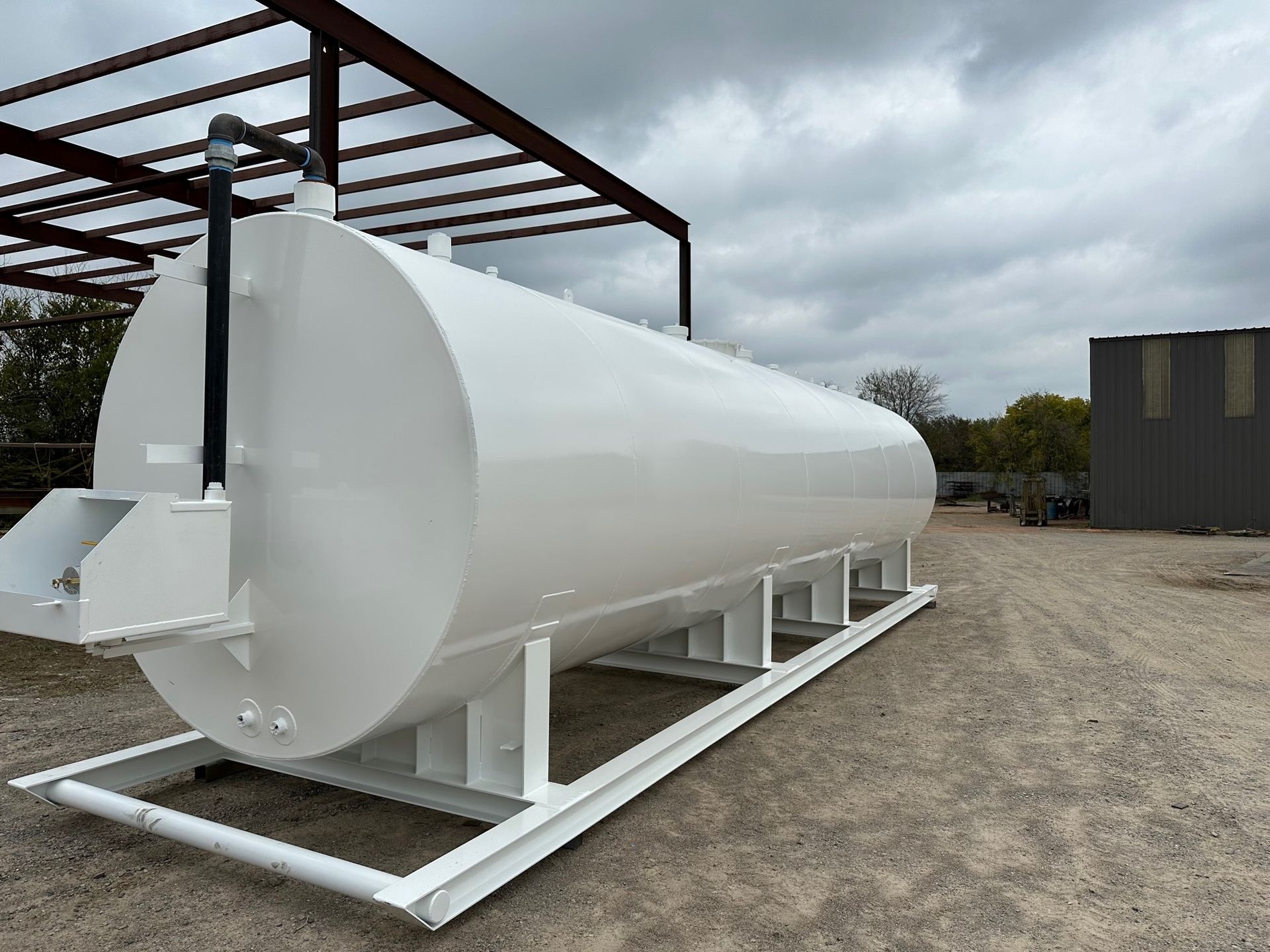
By Jacob Pearson
•
01 Dec, 2023
Explore the essential guide to UL 142 fuel storage tanks, covering their design, specifications, compliance, and safety features. Learn about their crucial role in storing flammable liquids safely across various industries, and understand the differences between UL 142 and UL 2085 standards.
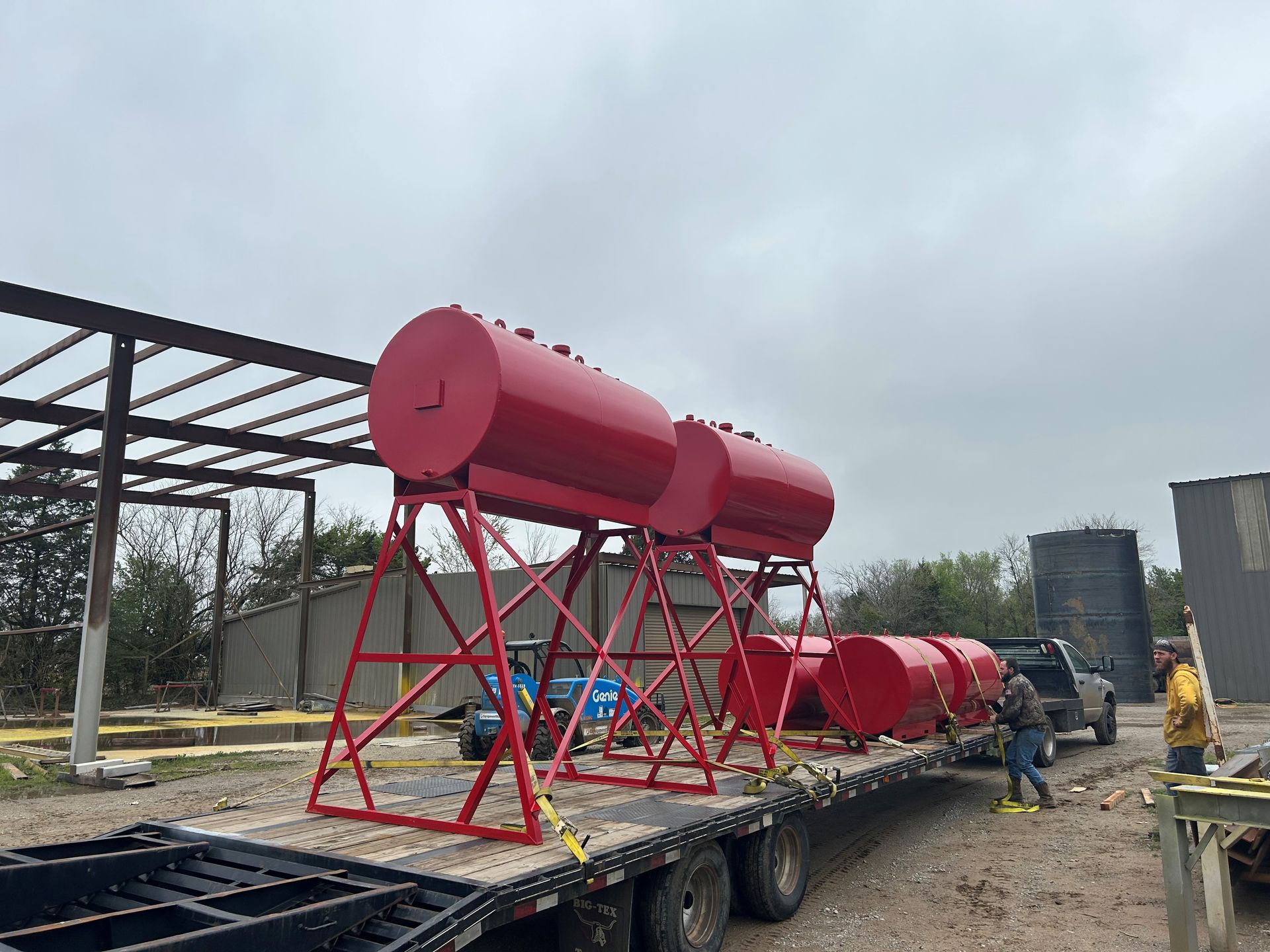
By Jacob Pearson
•
20 Nov, 2023
In an ever-evolving energy landscape, the role of above-ground fuel storage technology is becoming increasingly critical. Innovations in the field are creating more efficient, secure, and environmentally friendly fuel storage solutions. From cutting-edge construction techniques to advanced monitoring systems, these innovations are transforming the way fuel is stored and used. This article delves into the latest advancements in above-ground fuel storage technology and their implications for various industries. Innovations in Industrial Storage Tanks: Internal Floating Roofs Industrial storage tanks are witnessing continuous advancements with the integration of state-of-the-art features and technologies. One such innovation is the introduction of internal floating roofs, specifically designed for storing large quantities of crude oil and other petroleum products. These roofs, by floating on the surface of the stored liquid, minimize the vapor space and therefore, substantially reduce the risk of vapor release and emissions. For instance, in a large-scale oil storage facility, internal floating roofs can significantly curb the emissions of volatile organic compounds (VOCs) by up to 95% compared to traditional fixed roofs. This helps companies comply with environmental regulations while also contributing to a cleaner and safer working environment. Enhanced Safety with Secondary Containment Systems and Polyethylene Lining Another important innovation in the construction of above-ground fuel storage tanks is the use of secondary containment systems or double-walled tanks. These systems offer an extra layer of protection against leaks and spills by safeguarding the main storage vessel. In the event of a leak from the primary tank, the secondary containment system prevents the leaked substance from infiltrating the environment. This helps companies avoid expensive cleanup operations and potential legal liabilities. Moreover, the implementation of polyethylene lining on steel tanks is another notable innovation. This lining acts as a defensive shield against corrosive activities, thus preventing structural damage. Further, molecular bonding techniques are being employed to strengthen the tanks and enhance their durability. These advancements in construction techniques, combined with regular inspection and maintenance, ensure the longevity and integrity of above-ground fuel storage tanks. Material Selection: Ensuring Durability and Corrosion Resistance In the construction of above-ground fuel storage tanks, the selection of materials plays a pivotal role in ensuring durability and preventing corrosion. Polyethylene lining on steel tanks is a key feature that safeguards against corrosive activities and structural damage. This lining serves as a protective barrier, enhancing the longevity of the tanks. Another material of significance is Inconel 625, a high-strength nickel-based alloy, often chosen as the preferred metal for the primary membrane due to its compatibility with fuel oil. This alloy exhibits excellent corrosion resistance and high strength at high temperatures, making it ideal for use in fuel storage tanks. By using these materials, companies can prevent leaks, corrosion, and structural failures, ensuring the safe storage of fuel and minimizing the risk of environmental contamination. Advanced Monitoring and Leak Detection Systems in Modern Fuel Storage Tanks Modern fuel storage tanks are equipped with advanced monitoring and leak detection systems, providing real-time information on fuel levels, pressure, and temperature. These systems enable operators to keep a close eye on the storage conditions and quickly detect any abnormalities or potential leaks. For example, a dual membrane system with a repurposed interbarrier space allows for effective leak detection. By monitoring the interbarrier space for any changes in pressure or gas composition, operators can quickly identify and address potential leaks. Moreover, the use of pre-assembled components into panels also facilitates installation, especially in tanks with limited access dimensions. This modular approach to construction allows for rapid installation and reduced downtime, improving operational efficiency. Revolutionizing Fuel Dispensing with Modern Technology The advancements in fuel dispensing technology have also been significant, revolutionizing the way fuel is delivered. Modern fuel dispensing systems allow for efficient and accurate fuel delivery, ensuring that the right amount of fuel is dispensed every time. These systems are automated and equipped with precise measurement capabilities, ensuring controlled and safe fuel dispensing and minimizing the risk of spills or overfilling. For instance, some fuel dispensing systems are equipped with automatic shut-off valves that prevent fuel from being dispensed if a vehicle's tank is full. This not only prevents fuel wastage but also reduces the risk of fuel spills and environmental contamination. Moreover, these systems are compatible with a variety of fuel types and feature advanced nozzle designs that enhance the fueling process. By implementing these advanced fuel dispensing systems, companies can improve efficiency, enhance safety, and minimize environmental impact. Above-Ground Fuel Storage Applications in Various Industries The implementation of above-ground fuel storage technologies varies across industries, reflecting the diverse needs and challenges of different sectors. For instance, the U.S. Navy emphasizes careful attention to fuel delivery, storage, and distribution to avoid adverse environmental impacts. They prioritize the use of innovative concepts and technologies to ensure safe and efficient fuel storage. One example is the use of fuel bladders, flexible containers that can be easily transported and deployed in remote locations. These bladders provide a temporary storage solution for fuels, enabling the Navy to operate in areas where permanent storage infrastructure is not available. Such innovations demonstrate the adaptability of above-ground fuel storage technology and its potential to address diverse storage needs. Advanced Storage Technologies in the Nuclear Industry In the nuclear industry, the use of advanced storage technologies is crucial for managing used nuclear fuel. Holtec International's HI-STORM system, for instance, is utilized for the dry storage of used nuclear fuel. This system features interchangeable sealed metallic Multi-Purpose Canisters (MPCs), a vertically ventilated storage overpack, or underground Vertical Ventilated Module (VVM), and an on-site transfer cask known as HI-TRAC. The HI-STORM system is designed with safety and logistical benefits in mind, complying with environmental standards and ensuring the safe and secure storage of nuclear fuel. The implementation of advanced above-ground fuel storage technologies in the nuclear industry underscores the potential of these innovations to address complex storage needs and contribute to safe and sustainable energy practices. Environmental Considerations in Above-Ground Fuel Storage Systems Environmental considerations and regulations play a crucial role in shaping the design and operation of above-ground fuel storage systems. Stringent environmental regulations govern above-ground fuel storage to minimize potential risks and protect the environment. Companies must adhere to these regulations and implement best practices to prevent environmental contamination. Proper maintenance and regular inspection procedures are crucial to ensure compliance with these regulations. For example, advanced leak detection systems are extensively used to prevent potential environmental contamination. These systems enable early detection of leaks, allowing for prompt remedial action and minimizing the impact on the surrounding environment. By complying with environmental regulations and implementing advanced leak detection systems, companies can demonstrate their commitment to environmental sustainability and responsible fuel storage practices. Benefits of Above-Ground Fuel Storage Over Other Options Above ground fuel storage offers several benefits over other storage options. Firstly, it provides ease of installation and accessibility for maintenance. With above-ground tanks, installation can be completed more quickly and maintenance tasks can be performed more easily compared to underground tanks. This means that tanks can be easily installed and inspected, reducing downtime and maximizing operational efficiency. Secondly, above-ground storage allows for cost-effective expansion and modification. Unlike underground storage options, companies can easily increase the storage capacity or implement additional features, such as secondary containment systems, to meet their changing needs. This flexibility makes above-ground storage a cost-effective option for many companies. Operational Advantages of Above-Ground Fuel Storage Tanks Furthermore, above-ground storage tanks provide better visibility and control during fueling operations, enhancing safety and efficiency. Operators can easily monitor the fuel levels and quickly identify any issues, ensuring a smooth and controlled fueling process. Additionally, above-ground tanks are designed to withstand various weather conditions, ensuring the uninterrupted supply of fuel. This reliability, combined with the increased capacity of modern tanks, makes above-ground storage a preferred option for many businesses. By choosing above-ground storage, companies can achieve operational efficiency, reduce costs, and ensure the safe and secure storage of fuel. Enhanced Performance Features in Modern Industrial Storage Tanks Modern industrial storage tanks come with advanced features that further enhance their performance. For instance, internal floating roofs minimize the vapor space, reducing the risk of evaporation and emissions. This not only helps companies comply with environmental regulations but also contributes to a cleaner and safer working environment. Secondary containment systems provide an extra layer of protection against leaks and spills, ensuring the safety and integrity of the main storage vessel. Thermally insulated above-ground storage tanks are designed to maintain high mechanical strength and integrity, even in extreme temperatures. These advanced features ensure the safe and efficient storage of fuel, minimizing the risk of environmental contamination and ensuring operational reliability. Advancements in Natural Gas Storage Technologies While the focus of this article is on above-ground fuel storage, it is worth mentioning that natural gas storage technologies are also witnessing significant advancements. Adsorbed Natural Gas Storage (ANGS) utilizes activated carbon to store natural gas at high pressures, increasing storage capacity and reducing infrastructure costs. Cryogenic Natural Gas Storage involves cooling natural gas to a liquid form, enabling higher storage density and global trade opportunities. Underground natural gas storage utilizes depleted fields or caverns, providing seasonal storage, enhanced system reliability, and reduced price volatility. These innovative natural gas storage technologies play a crucial role in meeting the growing demand for clean and sustainable energy sources. Efficiency and Safety Improvements in Natural Gas Storage Technological advances in natural gas storage continue to improve efficiency and safety. For example, advancements in underground storage, Compressed Natural Gas (CNG) storage materials, and nanotechnology play a crucial role in enhancing the performance of natural gas storage systems. Cryogenic energy storage and CNG storage offer cost-effective and cleaner alternatives for transportation fuel. Continued research and innovation in natural gas storage technologies are crucial for sustainability and efficiency in the industry. By developing more efficient and reliable natural gas storage systems, companies can contribute to a greener and more sustainable energy future. The Promising Future of Above-Ground Fuel Storage Technology Looking ahead, the future of above-ground fuel storage technology is promising. Further advancements in underground storage will enhance capacity and operational efficiency. The expansion of Compressed Natural Gas (CNG) and Liquefied Natural Gas (LNG) infrastructure will facilitate the widespread adoption of natural gas as a cleaner fuel source. Integration with renewable energy sources will contribute to a more sustainable and diversified energy mix. Ongoing research and development in above-ground fuel storage technology will continue to drive innovation, shaping the future of the industry. By investing in the development of advanced above-ground fuel storage technologies, companies can position themselves at the forefront of the energy industry and contribute to a more sustainable and efficient energy future. The Significance of Innovations in Fuel Storage Technology In conclusion, the latest innovations in above-ground fuel storage technology offer improved safety, efficiency, and environmental compliance. These advancements in construction techniques, materials, monitoring systems, and fuel dispensing technology enhance the storage and distribution of fuel. By implementing these technologies, companies can ensure the safe and efficient storage of fuel, minimize the risk of environmental contamination, and comply with stringent regulations. With ongoing research and development, the future of above-ground fuel storage technology looks promising, paving the way for a more sustainable and efficient energy industry. These advancements underline the importance of continuous innovation in fuel storage technology and the need for businesses to stay abreast of these trends to remain competitive and sustainable in the long term.
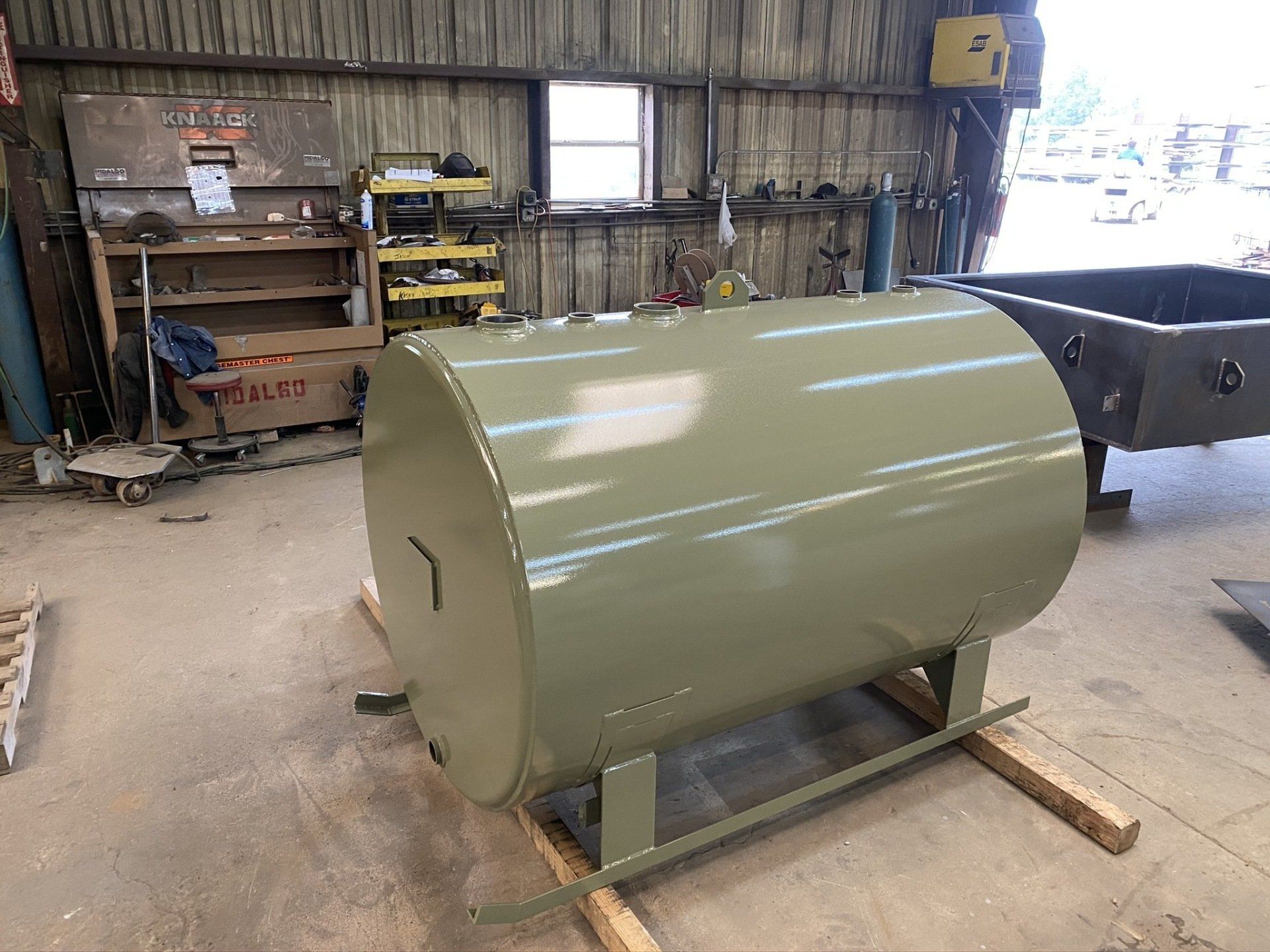
By Jacob Pearson
•
20 Nov, 2023
Learn about UL-certified aboveground storage tanks, designed for safely storing flammable and combustible liquids. Understand the significance of the UL 142 certification and its stringent safety standards. Discover the key features, construction requirements, and various certifications like UL 80 and UL-2085 that cater to different storage needs and offer enhanced safety measures.
SUPERIOR QUALITY.
ON-TIME DELIVERY.
REQUEST A QUOTE TODAY!
Weldco Manufacturing is your company of choice for top-notch metal fabrication services.
NAVIGATION
© 2024
All Rights Reserved | Weldco Manufacturing, LLC | Website by SiteFire.io


